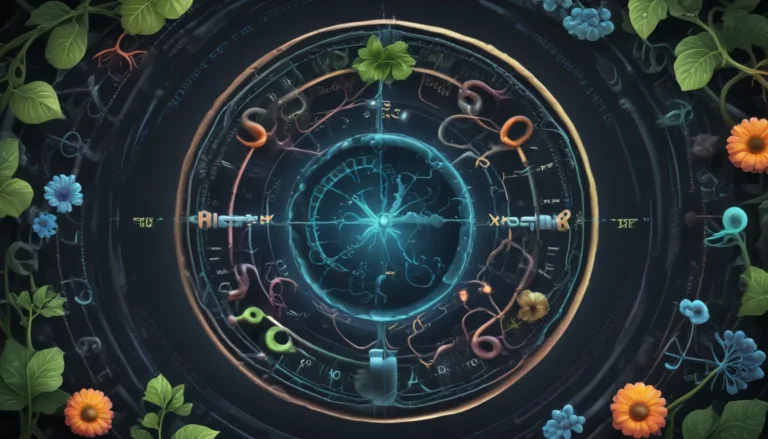A Note About Images: The images used in our articles are for illustration purposes only and may not exactly match the content. They are meant to engage readers, but the text should be relied upon for accurate information.
Welcome to the captivating world of cladistics, a field in biology that has transformed our understanding of the relationships between different species. Through the analysis of shared traits and the use of advanced algorithms, cladistic analysis has provided scientists with a tool to unveil the intricate web of evolutionary history. In this article, we will take a deep dive into the realm of cladistics, exploring 14 astonishing facts that underscore the significance and impact of this field. From uncovering surprising connections between diverse organisms to challenging long-standing beliefs about evolutionary relationships, these facts will showcase the remarkable power of cladistics in unraveling the mysteries of life on Earth. So, fasten your seatbelts and prepare to expand your knowledge as we embark on an incredible journey through the world of cladistics!
Key Takeaways:
- Cladistics revolutionizes our understanding of how different species are related through shared characteristics, reshaping evolutionary history and contributing to conservation efforts.
- The principle of parsimony and the analysis of homologous traits play a crucial role in cladistics, allowing scientists to reconstruct evolutionary trees and infer ancestral relationships.
The Origin of Cladistics
Cladistics, also known as phylogenetic systematics, emerged as a method to classify organisms based on their evolutionary relationships. The concept of cladistics was first introduced by German entomologist Willi Hennig in the mid-20th century, laying the foundation for a systematic approach to understanding the evolutionary history of life on Earth.
The Importance of Cladistics
By providing a systematic framework to analyze and interpret patterns of shared characteristics, cladistics has revolutionized the field of evolutionary biology. This approach allows scientists to decipher the relationships between different species, shedding light on the complex tapestry of evolutionary history.
Principle of Parsimony
At the core of cladistics lies the principle of parsimony, which advocates for the simplest explanation that requires the fewest evolutionary changes. By adhering to this principle, scientists can construct evolutionary trees that accurately depict ancestral relationships and the branching patterns of species divergence.
The Use of Homologous Traits
Cladistics hinges on the analysis of homologous traits, characteristics shared by species due to their common ancestry. Through the scrutiny of these shared traits, scientists can unravel the branching patterns of evolutionary relationships and create cladograms that visually represent these connections.
Shared Derived Traits
Shared derived traits, known as synapomorphies, are unique characteristics that originated in the most recent common ancestor of a group of organisms. These traits are pivotal in determining which species belong to the same clade, providing insights into the evolutionary relationships within a group.
Phylogenetic Trees
Phylogenetic trees, also referred to as cladograms, serve as visual representations of the evolutionary relationships between different species. These diagrams illustrate branching patterns, with each branch symbolizing a divergence in evolutionary history that traces back to shared ancestral relationships.
Understanding Ancestral Relationships
Through the lens of cladistics, scientists can untangle the ancestral relationships between diverse groups of organisms. By dissecting shared characteristics and constructing cladograms, researchers can identify species that share a common ancestor and elucidate the intricate web of evolutionary connections.
Molecular Phylogenetics
The realm of cladistics has expanded to encompass molecular data, such as DNA sequences, in addition to morphological characteristics. Molecular phylogenetics enables scientists to compare genetic information across species, refining our understanding of evolutionary relationships at a molecular level.
Cladistics and Conservation
Within the realm of conservation biology, cladistics plays a pivotal role in identifying species at risk of extinction. By discerning the evolutionary relationships between species and their habitats, conservation efforts can be targeted with precision, enhancing the effectiveness of conservation strategies.
Application in Paleontology
Cladistics finds widespread application in paleontology, where it illuminates the evolutionary history of extinct organisms. By analyzing fossil evidence to identify shared traits, scientists can reconstruct the relationships between ancient species, providing invaluable insights into the evolution of life on our planet.
Challenges in Cladistics
Despite its utility, cladistics encounters challenges in accurately determining ancestral characteristics and resolving intricate evolutionary relationships. Continuous research and technological advancements are driving improvements in the precision and reliability of cladistic analyses.
The Impact on Taxonomy
The influence of cladistics reverberates through the field of taxonomy, the science of classification. By offering a systematic framework based on evolutionary relationships, cladistics has refined and redefined taxonomic categories, enriching our understanding of the diversity of life on Earth.
Cladistics and Biogeography
Through the analysis of species distribution patterns and their evolutionary relationships, cladistics contributes significantly to the field of biogeography. This approach enables scientists to comprehend how organisms have dispersed and diversified across various regions over time, unveiling the dynamics of biodiversity.
Cladistics and Human Evolution
Cladistic analyses have illuminated the evolutionary relationships between modern humans and our ancestral relatives. By comparing shared traits and genetic data, scientists have pieced together our evolutionary history, offering insights into our closest kin and the journey of human evolution.
In conclusion, cladistics stands as a captivating field of biology that has reshaped our understanding of evolutionary relationships. Through the scrutiny of shared characteristics and the construction of phylogenetic trees, cladistics has unveiled a wealth of knowledge about the history of life on our planet. From its inception to its present-day prominence, cladistics underscores the interconnectedness of all living organisms, weaving a narrative of evolution that continues to captivate and inspire.
Explore Further: Unveiling the Wonders of Biology
Cladistics is just one facet of the vast tapestry of biology. Delve deeper into the secrets of phylogenetics, a discipline that delves into the intricate evolutionary histories of organisms. Taxonomy provides a framework for organizing the incredible diversity of life on Earth, offering insights into the classification of species. Lastly, evolutionary biology unravels the mysteries of how species evolve and adapt over time, shedding light on the essence of life itself. Each field contributes a unique perspective to our understanding of the living world that surrounds us.
Was this page helpful?
Our commitment to delivering trustworthy and engaging content lies at the heart of our mission. Each fact on our site is contributed by real users like you, bringing a wealth of diverse insights and knowledge. Our dedicated editors meticulously review each submission to ensure the highest standards of accuracy and credibility, guaranteeing that the information we share is both captivating and reliable. Trust in our dedication to quality and authenticity as you embark on a journey of exploration and learning with us.
Resources
- function()%7Bvar%20e=document.createElement('script');e.setAttribute('type','text/javascript');e.setAttribute('charset','UTF-8');e.setAttribute('src','//assets.pinterest.com/js/pinmarklet.js?r='+Math.random()*99999999);document.body.appendChild(e)%7D)([↩]





